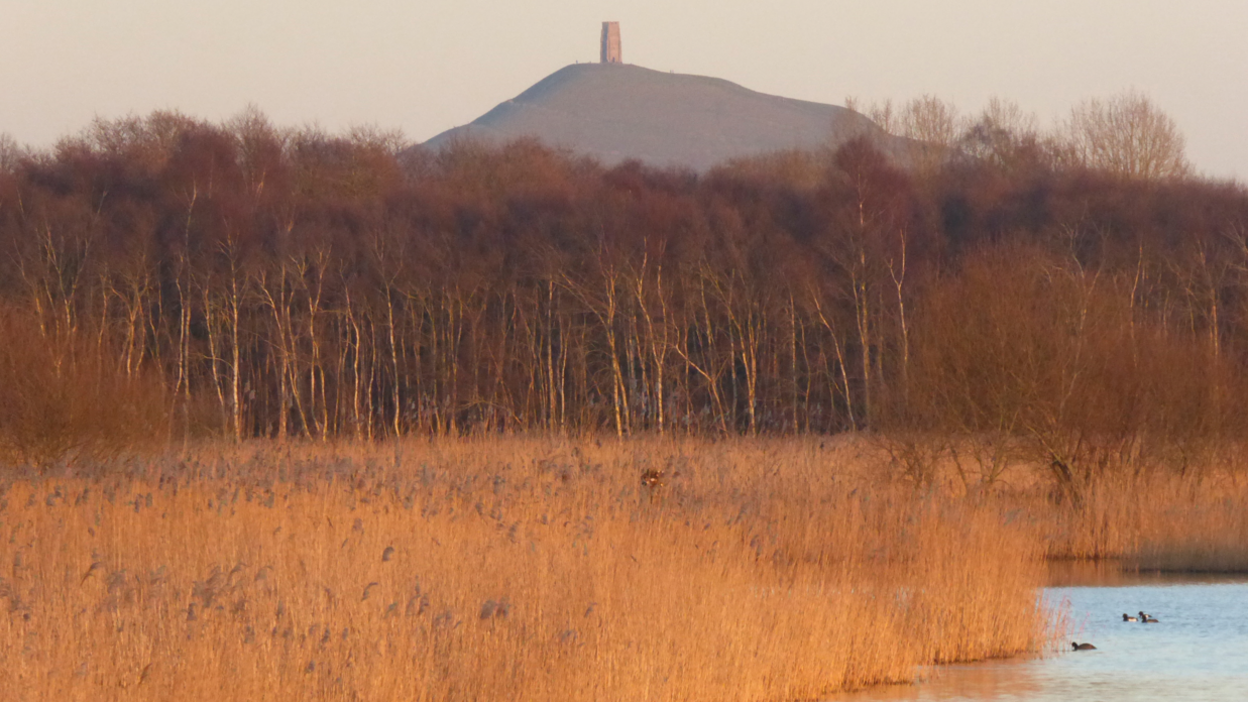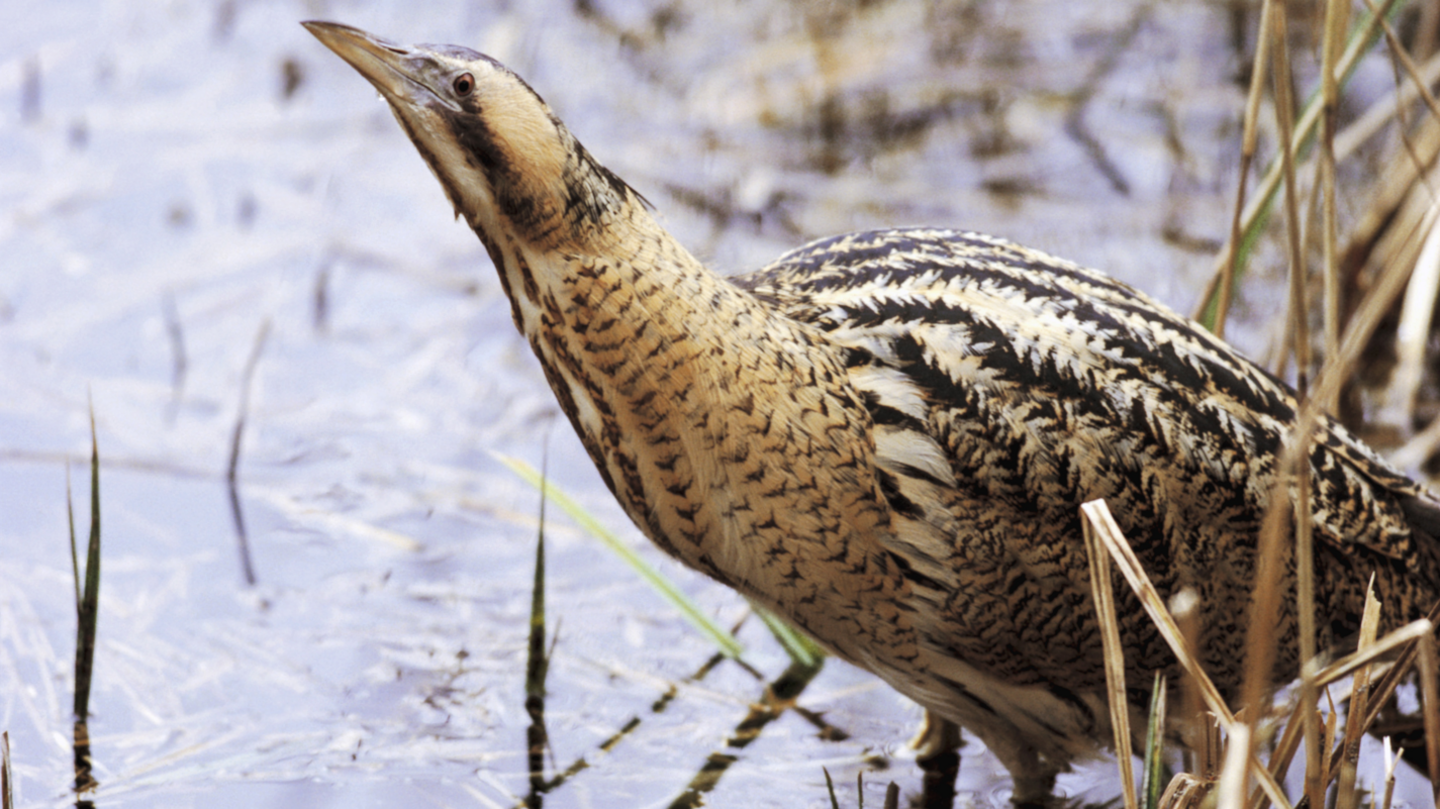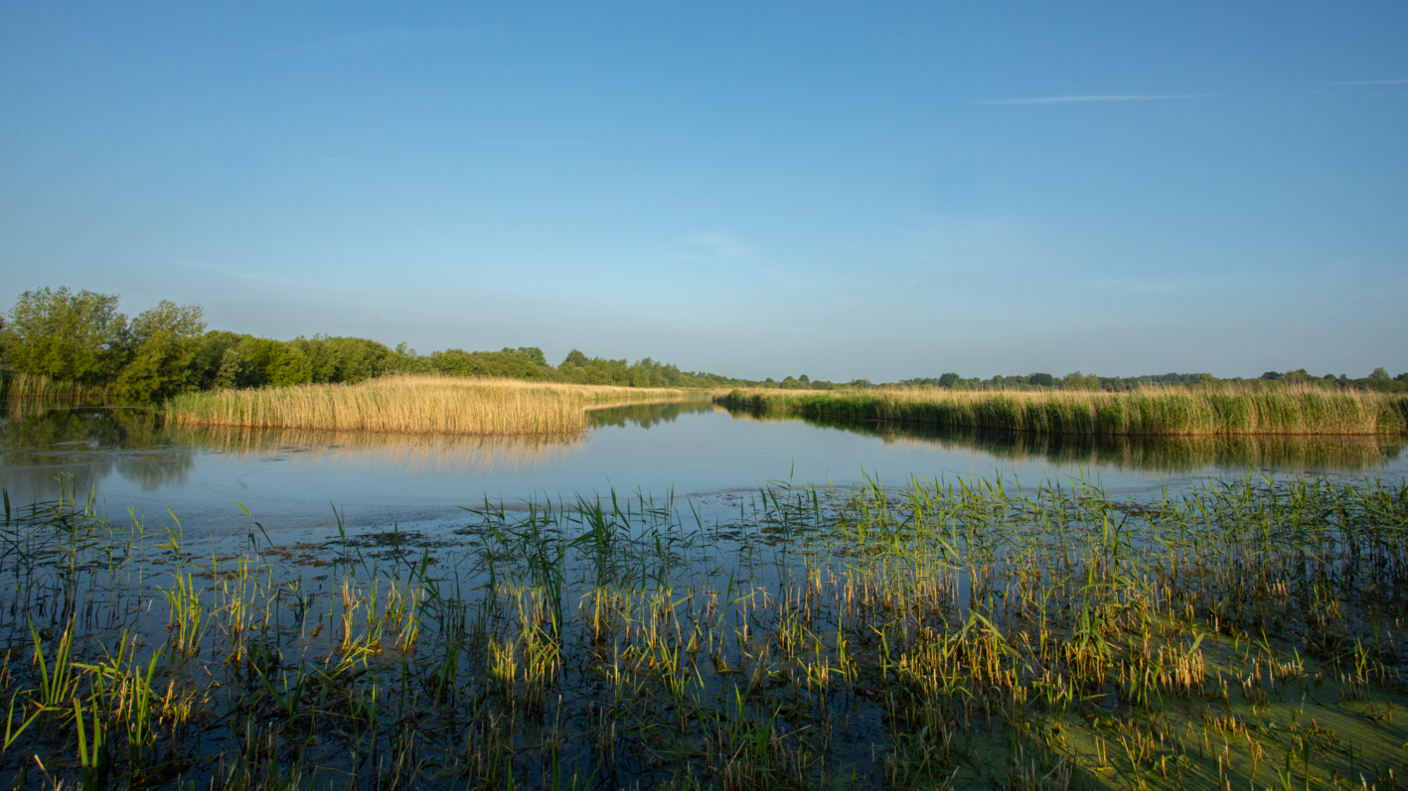Nature reserve helped recovery of bittern species

The nature reserve Ham Wall is celebrating its 30th anniversary
- Published
A nature reserve is celebrating its 30th anniversary and the success of bringing back a rare bird species.
Ham Wall near Glastonbury in Somerset was bought by the RSPB in 1994 who turned the former peat extraction site into a nature reserve.
The site is credited with helping the recovery of the bittern, which had been on the verge of extinction in the 1990s.
Tony Whitehead from the RSPB said: "It's probably one of the best places in the UK to see a bittern now. I don't think they would have turned up if we hadn't done the work."

In 1997 there were just 11 mating male bitterns, now there are twice that number on this site alone
In 1997 there were thought to be just 11 mating male bitterns, now the RSPB say there are twice that number on the Ham Wall site alone, 50 in Somerset and 239 in the UK.
Mr Whitehead said they turned the land into a home for bitterns by planting reed beds.
"Water is not such a problem, you can get water in these places. Then you have to get reeds," he said.
"In the early days we had the local community growing the reeds for us in the gardens and greenhouses."

After the reeds were planted, the birds started to appear
He said once the reed beds had grown, in 2005, birds started to appear.
"A few years after that, we had the first breeding of the birds, which was a real celebration," Mr Whitehead added.
"You just don't know what's going to turn up next."

The nature reserve was specifically aimed at bringing back the bittern
Bob Buck, who has volunteered at the site for 25 years, said: "If we hadn’t planted the reeds, done what we have, this wouldn’t have happened.
"It was ten years before I even saw a bittern, I thought they were like griffins, mythical beasts.
"In every sense this reserve is a success, it’s a success because we’ve done what we set out to do."
Get in touch
Tell us which stories we should cover in Somerset
Follow BBC Somerset on Facebook, external and X, external. Send your story ideas to us on email or via WhatsApp on 0800 313 4630.
Related internet links
- Published15 May 2024
- Published14 June 2021
